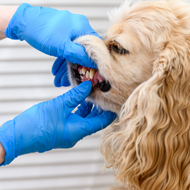Cat survey challenges ‘older cat lady’ stereotype
Younger cat owners were less likely to go to their veterinary practice for advice.
A new survey from Cats Protection upends the stereotype of the ‘older cat lady with moggy’, the charity says.
The charity’s Cats and Their Stats Report 2025 has revealed a new image of cat ownership, where cat owners are ‘young, affluent and pedigree-focused’.
Results from the online survey, conducted from February to April this year, found that 31 per cent of 18-34 year olds now own a cat. Nearly half of these cat owners had chosen a pedigree breed.
Meanwhile, cat ownership among 35-54 year olds has dropped to 27 per cent.
There was also suggestion that these younger cat owners may approach cat ownership very differently to older cat owners. This includes shifts in perspective on neutering, microchipping and sources of advice.
Cats Protection says that younger cat owners were less likely to go to a veterinary practice for advice. Instead, they were more likely to turn to social media for information and advice about their cats.
Many younger cat owners also hoped their cat would have kittens, which is believed to have contributed to an overall drop in neutering rates.
Statistics into pedigree cats found they were more likely (46 per cent) to be kept indoors than a moggy (32 per cent). They were also less likely to be microchipped, with just 65 per cent of pedigree cats being microchipped.
Cats Protection believes that this younger demographic of cat owners has lead a shift from adoption to purchasing cats.
In the past year, 15 per cent of cats were bought from specialist breeders. This marks an increase of 10 per cent.
The charity is concerned about a corresponding decline in cats being adopted. Just 16 per cent of cats are being adopted, compared to 44 per cent of cats being bought.
Sarah Elliott, Cats Protection Central Veterinary Officer, said: “In the UK cat acquisition is increasingly skewing towards pedigree cats and purchase over adoption.
“We therefore need to motivate cat owners to help reverse the increasing popularity of buying and become enthusiastic adopters by championing the moggy, as well as highlighting all the benefits of adoption – including the adoption of pedigree cats from rescue organisations, when they occasionally become available.”
Image © Josep Suria/Shutterstock.com



 The WSAVA has invited veterinary professionals to a webinar on responsible antibiotic usage in dentistry.
The WSAVA has invited veterinary professionals to a webinar on responsible antibiotic usage in dentistry.